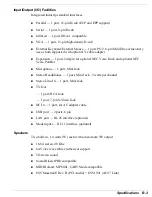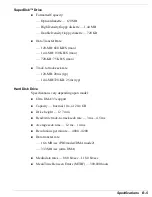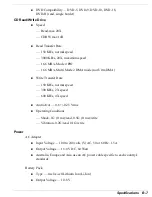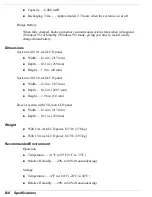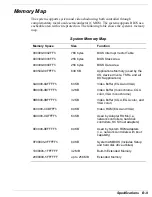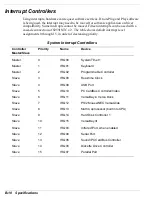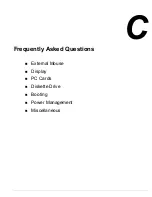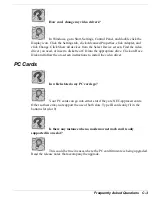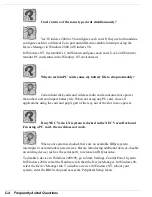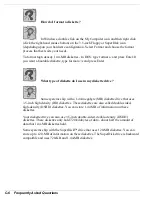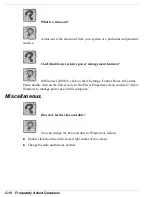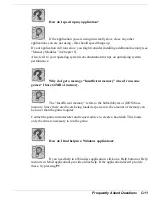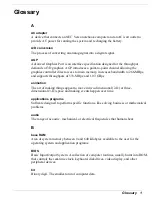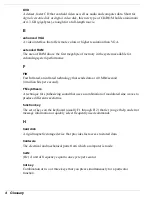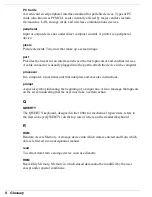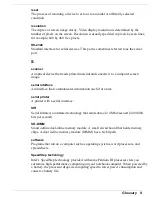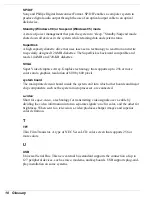
Frequently Asked Questions C-7
Booting
What is the difference between a warm boot and a cold boot?
A warm boot restarts the system while system power is on. A warm boot
is also a software reset. A warm boot clears volatile system memory and reloads the
operating system.
In Windows, press
Ctrl
,
Alt
, and
Del
twice to restart the system or go to Start, Shut
Down, Restart the computer. In DOS mode, press
Ctrl
,
Alt
, and
Del
to warm boot the
system.
A cold boot is a system start with power off. A cold boot also resets the hardware. It
checks the hardware and reloads the operating system.
Press the system unit Power button to perform a cold boot or go to Start, Shut Down, to
shut down the computer. If power is on, turn the power off using the system unit Power
button, wait at least five seconds, and then turn the power on.
Power Management
Does my system come with power management features enabled?
Your system’s default settings are configured with power management
features enabled when on DC (battery) power and disabled when on AC power. Use the
BIOS Setup Utility to modify the default settings, if desired.
If you do not use the keyboard, mouse, or drives for the preset length of inactive time,
your screen goes blank and your system goes into a power saving mode of operation.
This is known as Standby mode (Windows NT) or LCD timeout (Windows 2000/98).
When your screen goes blank, just press the Space Bar or move your mouse to
reactivate your system. If the power status LED blinks, the system has entered the next
level of power management, Suspend mode (Windows NT) or Standby mode
(Windows 2000/98). See the following questions and answers.
Summary of Contents for VERSA LXI - VERSION 10-2000
Page 1: ......
Page 39: ...2 12 Getting Started Inserting the battery pack 6 Turn over the system...
Page 144: ...9 Using Multimedia Audio Video Multimedia Applications...
Page 151: ...10 Solving System Problems Problem Checklist Start Up Problems If You Need Assistance...
Page 168: ...B Specifications System Components Memory Map Interrupt Controllers...

